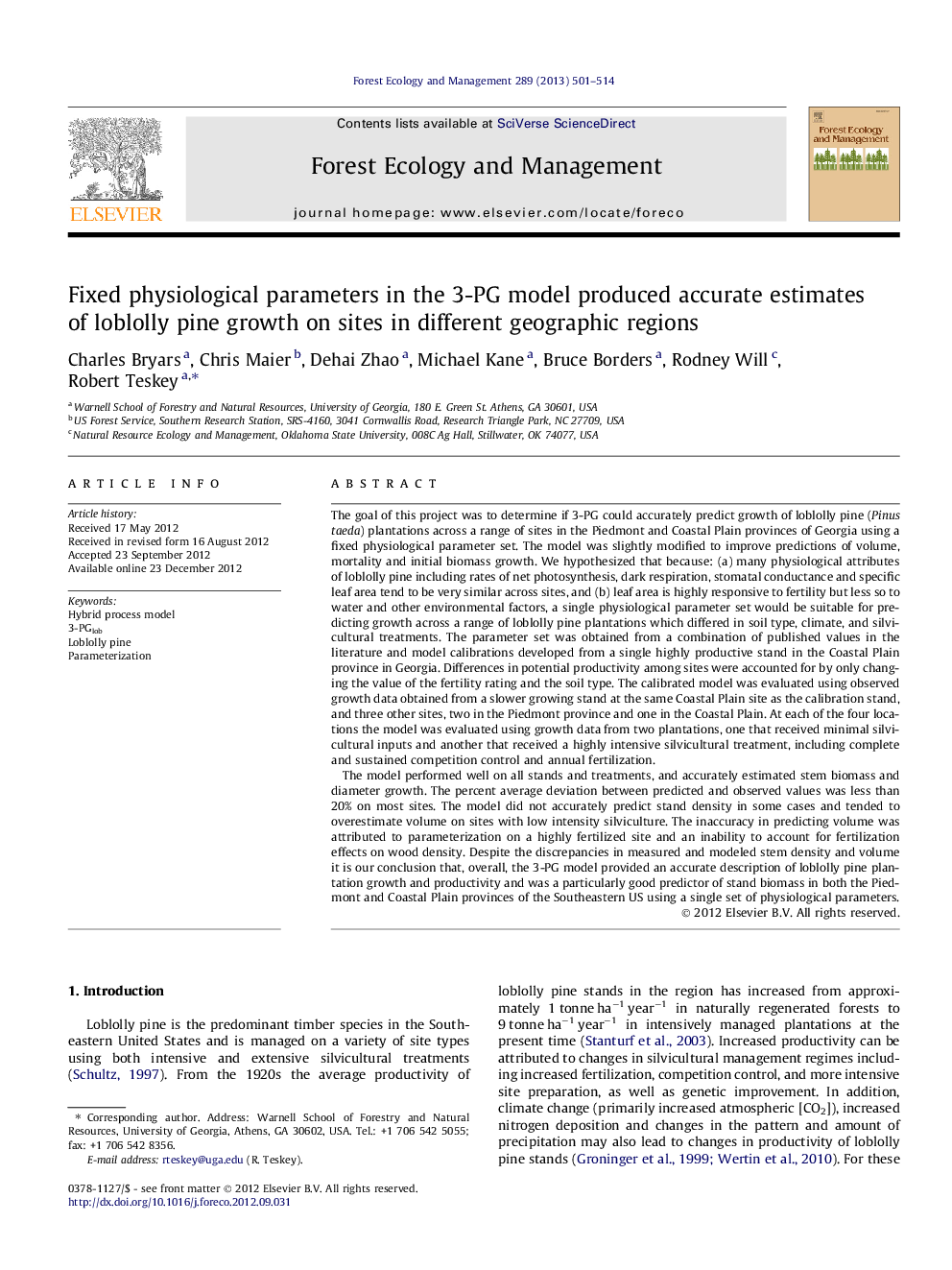| کد مقاله | کد نشریه | سال انتشار | مقاله انگلیسی | نسخه تمام متن |
|---|---|---|---|---|
| 87015 | 159226 | 2013 | 14 صفحه PDF | دانلود رایگان |

The goal of this project was to determine if 3-PG could accurately predict growth of loblolly pine (Pinus taeda) plantations across a range of sites in the Piedmont and Coastal Plain provinces of Georgia using a fixed physiological parameter set. The model was slightly modified to improve predictions of volume, mortality and initial biomass growth. We hypothesized that because: (a) many physiological attributes of loblolly pine including rates of net photosynthesis, dark respiration, stomatal conductance and specific leaf area tend to be very similar across sites, and (b) leaf area is highly responsive to fertility but less so to water and other environmental factors, a single physiological parameter set would be suitable for predicting growth across a range of loblolly pine plantations which differed in soil type, climate, and silvicultural treatments. The parameter set was obtained from a combination of published values in the literature and model calibrations developed from a single highly productive stand in the Coastal Plain province in Georgia. Differences in potential productivity among sites were accounted for by only changing the value of the fertility rating and the soil type. The calibrated model was evaluated using observed growth data obtained from a slower growing stand at the same Coastal Plain site as the calibration stand, and three other sites, two in the Piedmont province and one in the Coastal Plain. At each of the four locations the model was evaluated using growth data from two plantations, one that received minimal silvicultural inputs and another that received a highly intensive silvicultural treatment, including complete and sustained competition control and annual fertilization.The model performed well on all stands and treatments, and accurately estimated stem biomass and diameter growth. The percent average deviation between predicted and observed values was less than 20% on most sites. The model did not accurately predict stand density in some cases and tended to overestimate volume on sites with low intensity silviculture. The inaccuracy in predicting volume was attributed to parameterization on a highly fertilized site and an inability to account for fertilization effects on wood density. Despite the discrepancies in measured and modeled stem density and volume it is our conclusion that, overall, the 3-PG model provided an accurate description of loblolly pine plantation growth and productivity and was a particularly good predictor of stand biomass in both the Piedmont and Coastal Plain provinces of the Southeastern US using a single set of physiological parameters.
► A modified version of the 3-PG model was used to predict growth of Pinus taeda plantations.
► The model was calibrated with data from one highly productive stand.
► Seven fast and slow growing plantations were used to validate model predictions.
► 3-PG produced accurate predictions of stem biomass, diameter and volume growth.
► It was less accurate in predicting stand density.
Journal: Forest Ecology and Management - Volume 289, 1 February 2013, Pages 501–514